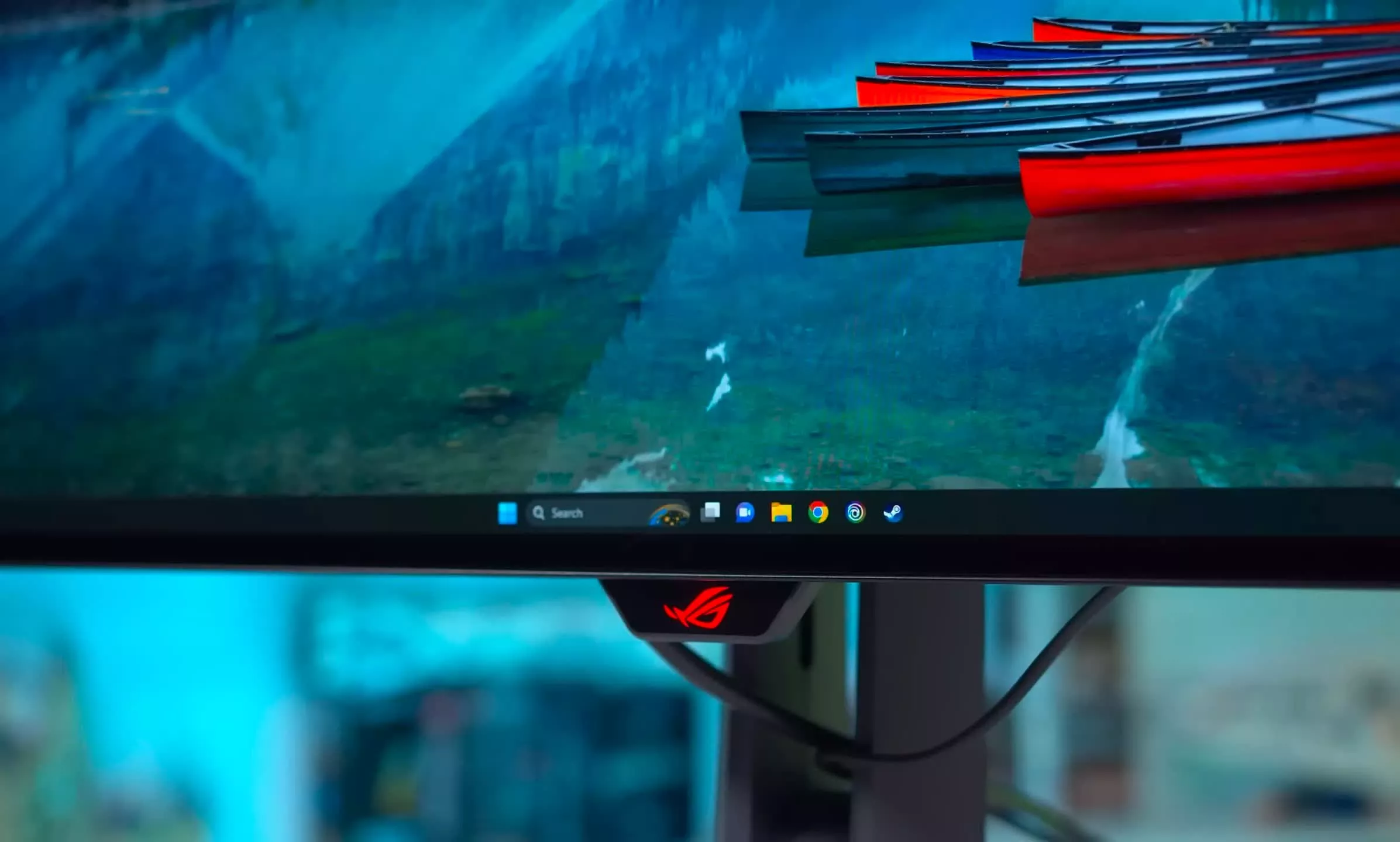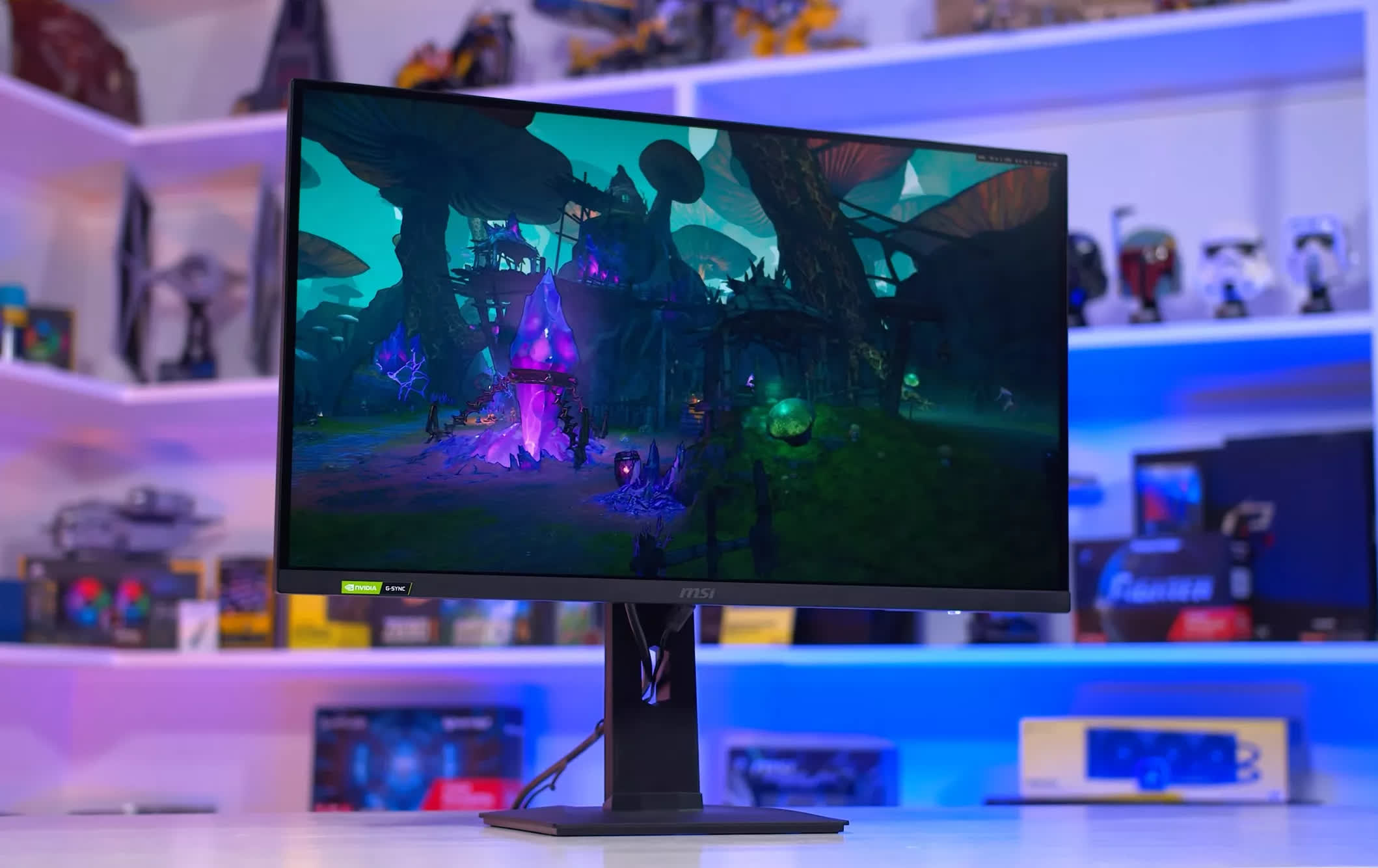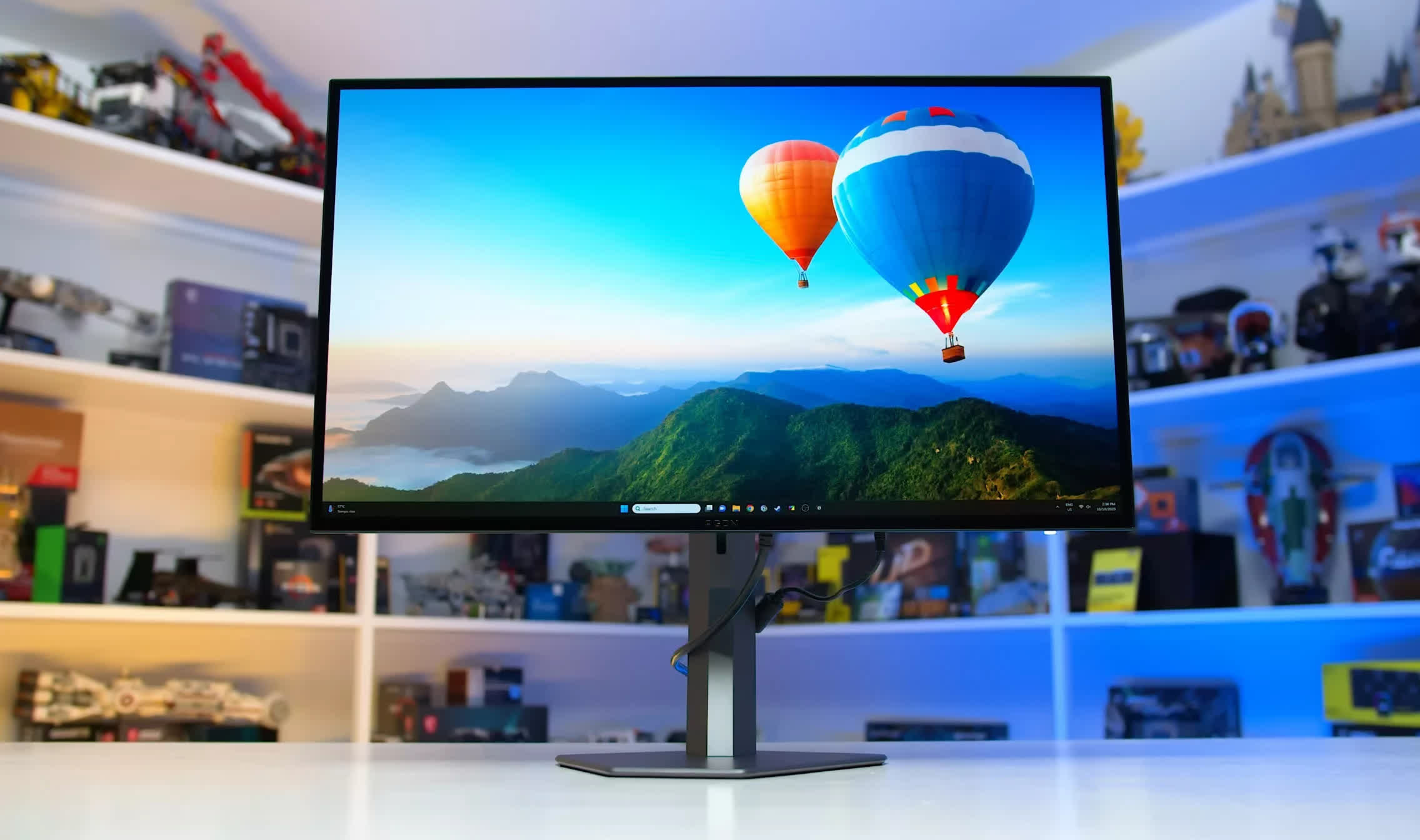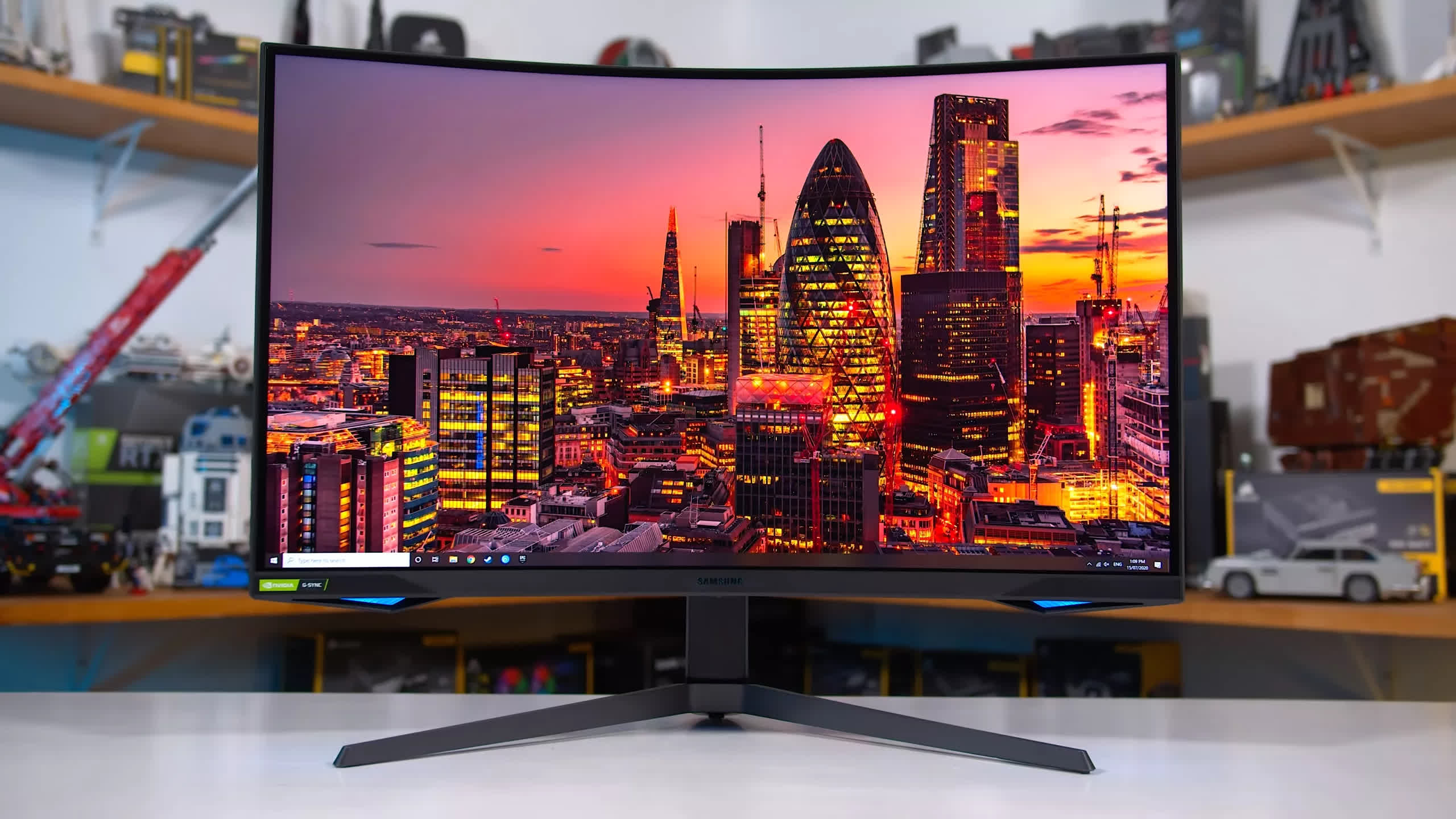There are lots and lots of options to choose from in the 1440p gaming monitor market, and for many gamers this remains the sweet spot for playing at high refresh rates without the prohibitive cost of a more expensive GPU. Since our last update, more OLED options have become available, even more 240Hz options, and there have been significant updates to our favorite products.
We've split our recommendations in five categories covering a variety of 1440p monitor models and configurations. As usual, we tend to discuss and recommend monitors we've personally tested and know to be excellent options, or monitors that are very similar to the ones we have tested.
It's always worth going back and checking out the dedicated monitor reviews we produce for more specifics around performance and features on each product. Lastly, it's worth mentioning we also have a general buying guide for productivity monitors, gaming monitors, and dedicated guides for 4K gaming monitors and OLED displays.
- Best Budget 1440p
- Premium 1440p @ 240Hz
- Best Value 1440p @ 240Hz
- Best 1440p @ 360Hz
- Best 32-Inch 1440p
Best Budget 1440p
Gigabyte M27Q-P | MSI G274QPF-QD | LG 27G Models

For gamers on a budget, this is the best category on the market: 1440p at refresh rates around 120Hz to 180Hz, which we like to call the medium refresh rate category. Typically, if you want to get into PC gaming for the first time, or you want to upgrade from an older 1080p display, it's this 1440p category that provides the best bang for buck and offers the most choices.
Pricing continues to fall slowly in the 1440p "bang for buck" category. A few years ago we'd be saying a price around $400 to $500 for a 1440p 144Hz monitor is reasonable. But today, there are good options priced below $280 that we believe is the most you should pay for a display in this segment. Depending on what's available in your region, we'll discuss a group of different options that are priced similarly and are some of our favorites in this price range...
You can get both the Gigabyte M27Q-P and MSI G274QPF-QD for around $280 and we think it's pretty hard to choose which one is superior. Both are 27-inch 1440p 170Hz IPS LCD monitors and while they use different panels, overall performance is similar. Both deliver good though not amazing response time experience. Variable refresh rates are supported with both models and it functions well with all GPU brands.
Both options have near identical brightness and contrast, the MSI version has a wider color gamut, the Gigabyte model has a more accurate sRGB mode. The Gigabyte model offers a KVM switch which isn't found on the MSI model, though both have USB-C input. If one of those feature differences is important to you, that could be the deciding factor, otherwise we'd get whichever was more affordable in your region.
In the past we've recommended the Gigabyte M27Q, but these days it's just $10 cheaper and we believe the M27Q-P is better. We've also recommended several LG 1440p mid-refresh models over the years including the 27GL850, 27GL83A, 27GP83B and 27GP850 – which are all reasonably similar. The LG 27GP83B, for example, is $20 more than the MSI and Gigabyte top recommendations, but isn't all that different. It has a notably worse contrast ratio and a more limited color gamut than the MSI. But it does have slightly better response time tuning, if that's of great importance to you.
If you want to save as much as possible, the Gigabyte G27Q can be found around $220. We haven't tested it yet, so it's a bit of a risk, but it does seem to be a decent candidate if you are willing to sacrifice features and performance. Relative to the other options, it has a lower refresh rate, weaker response times, it lacks a KVM switch, and has a slightly smaller color gamut.
Premium 1440p / OLED @ 240Hz
Asus ROG Swift OLED PG27AQDM

The Asus ROG Swift OLED PG27AQDM is the best premium 1440p 240Hz monitor and is also one of the overall best 1440p displays. It's perhaps a contender for best gaming monitor you can get, period. It brings with it a 27-inch 2560 x 1440 WOLED panel at a 240Hz refresh rate. This is an excellent high-end display, offering elite speed for competitive gamers and stunning HDR visuals for single player gamers in the one package.
The main reason why you'd purchase an OLED like this is for its HDR performance, and this Asus monitor delivers with noticeably higher brightness compared to the four other variants we've tested so far that use the same panel. We see up to 900 nits of brightness in HDR content which when combined with the deep zero-level blacks of OLED, result in a super high contrast ratio, and per pixel dimming – leads to a stunning HDR experience that looks fantastic while gaming. It's also capable of 250 nits of brightness for SDR content, much higher than most other WOLED monitors we've tested.
With a 240Hz refresh rate, the Asus PG27AQDM is also capable of elite motion clarity. While gaming at 240Hz, it looks clear and smooth, thanks to lightning-fast response times. A 240Hz OLED is roughly equivalent to a 360Hz LCD in terms of clarity, and OLEDs are able to deliver the same response performance at all refresh rates, leading to an artifact-free experience, even when gaming at, say, 100Hz. This gives this display a rare combination of motion clarity and visual quality that you don't get from other products. This is one of the few monitors that can deliver a top tier experience in both HDR and motion in the same package.
Other benefits from this Asus OLED include excellent viewing angles, a great build quality with no obvious fan noise, a nice wide color gamut, and of course, adaptive sync support. It is expensive at $1,000 and these days it's the most premium of the 1440p 240Hz OLEDs, but given the extra brightness Asus provides for HDR, we feel the premium is worth it for high-end shoppers.
The key issue with getting an OLED is desktop/productivity usage. The Asus PG27AQDM is not well suited to productivity work or desktop apps due to its non-standard subpixel layout, which causes text rendering issues; as well as its risk of permanent burn-in while viewing static content. Neither of these drawbacks are of any concern while gaming or watching videos, but right now OLED isn't well suited to desktop tasks, so if you are planning on doing a lot of that, we'd grab something else.
If you want what the Asus PG27AQDM provides in terms of its OLED panel but you don't quite have the cash to spend, the AOC AG276QZD is a decent alternative for $800. It isn't as good, in particular its HDR brightness is lower than what Asus provides, but it does use the same LG OLED panel meaning, so delivers all the same OLED benefits like elite response times and per pixel local dimming.
As of writing, $800 is the lowest you will find for a 1440p OLED and the AOC performed well in our testing, with a few minor annoyances here and there. We feel the 20% discount relative to the Asus is fair, so it's a product to consider if you don't want to stretch the budget all the way up to $1,000.
Best Value 1440p @ 240Hz
MSI G274QPX | LG 27GR83Q

If you want a 1440p 240Hz monitor but want to spend less than what a premium OLED costs, there's good news: standard 1440p 240Hz LCD monitors are more affordable than ever. You won't need to spend any more than $400 to grab a quality 1440p 240Hz monitor, which will deliver better motion clarity and lots of future proofing, even if you primarily play single player titles.
The two top options in this class are the MSI G274QPX and the LG 27GR83Q. We've seen both of these monitors on sale for as low as $350, though typical pricing is around $380 for the MSI versus more like $500 for the LG. At those prices, it's difficult to recommend any other 1440p 240Hz monitor above $400 – we've tested quite a few of them and they just don't offer enough additional performance to justify the higher price.
The LG 27GR83Q is the superior choice between the two, offering better performance and a richer feature set, so if you see both at the same price, the LG is the way to go. Both offer a 27-inch 1440p 240Hz IPS LCD, delivering decent speed and a low latency 240Hz experience, however the LG model is better tuned for improved motion performance. It also has somewhat better color accuracy and a wider range of calibration options, so it's easier to get the LG variant into a nice and accurate state while also being slightly better from the factory. HDMI 2.1 strengthens the 27GR83Q's feature set as well.
The LG 27GR83Q does enough to justify a ~10-15% price premium over the MSI G274QPX, so that's the benchmark we'd set for a decision when looking at local pricing. With that said, the MSI G274QPX does get pretty close, it's still a great monitor and in areas like motion performance and factory color accuracy are only minor downgrades that could be hard to spot.
In previous months we had recommended the Gigabyte M27Q-X which is back in stock for ~$410. This is another monitor worth considering as it's pretty similar to the MSI G274QPX. The Gigabyte a little better tuned for motion, the MSI with a wider color gamut and higher contrast ratio. Right now the Gigabyte model is 11% more expensive in the US, which isn't outrageous but we'd have the MSI as the better value choice.
The Samsung Odyssey G7 is another previous contender with its 27-inch 1440p 240Hz VA panel, it can be found for about $500. The Samsung has a much higher contrast ratio than either of the IPS models we've been talking about, and it has faster response times, making it more of a premium choice. However, the Odyssey G7 is a curved display which is not ideal at this size and aspect ratio. There have been issues with flickering over the years, too. At around 30% more than the IPS alternatives, it's hard to justify choosing this monitor over the other picks.
Best 1440p @ 360Hz
Asus ROG Swift PG27AQN

For competitive multiplayer use, the ultimate high performance 1440p gaming monitor is the Asus ROG Swift PG27AQN. It packs a 27-inch IPS panel with some of the fastest response times we've ever measured on an LCD, further optimized by a firmware update after its release. It's a premium monitor, coming in at $1,000, so it's very much something for hardcore esports gamers, but it does deliver impressive performance.
The main advantages to getting a 360Hz display like this are in motion clarity and input lag. When gaming at 360Hz, you'll get the clearest experience of any 1440p monitor, just slightly edging out the 240Hz OLED we talked about earlier. This level of clarity and smoothness makes it easier to spot and target enemies, without sacrificing on resolution. In years prior, to access this refresh rate, you'd have needed a 1080p display, which isn't the best these days. With the PG27AQN you get a higher 1440p resolution, delivering a sharper image and additional versatility as this is also a great monitor for single player games thanks to its pixel density and excellent IPS color quality.
The 360Hz refresh also brings with it lower input latency – this is a very responsive display – the fastest we've experienced at 1440p. It has adaptive sync support with great performance, especially above 100Hz. Asus delivers outstanding color calibration, which is often not the case with other competitive-focused gaming monitors; this again strengthens the versatility of this display and its usability for all types of gaming.
Asus recently released a firmware update for the PG27AQN introducing backlight strobing support through Nvidia ULMB 2. This is an impressive implementation that produces a superb, clear image for competitive gaming. We were a little disappointed that a multiplayer-focused display like this didn't have strobing at launch, but now that it does, the feature set has been strengthened significantly – although we should note that ULMB 2 requires an Nvidia GPU in this display.
On the downsides, aside from its high price tag is the lack of proper HDR support. This is a product focused towards competitive gamers, so we suspect those who are more interested in a single player experience will be better off with the Asus 240Hz OLED at a similar price to access true HDR. But if you must have the clearest, cleanest, lowest latency experience to give you that competitive advantage in multiplayer games, the Asus PG27AQN is where it's at.
Best 32-Inch 1440p
LG 32GP750 | 32GP83B | 32GP850

So far, the focus of this buying guide has been on 27-inch 1440p monitors, which is where the best performing products are today. But for some, 27 inches is just too small and that's where 32-inch format comes into play.
Right now, the best 32-inch 1440p monitors are four options from LG. There's the LG 32GP850, 32GP83B, 32GP750 and the 32GQ850, all are 32-inch 1440p IPS monitors of varying refresh rates and prices. Here's how it all breaks down...
The LG 32GP850 is the monitor we've tested in-house and found to be very good with solid response times and color performance: nice wide gamut for DCI-P3 use cases, reasonable response time tuning, a great sRGB mode and up to a 180Hz refresh rate. At $400 this is a pretty good buy, though the LG 32GP83B is very similar and is available for $350 – it's essentially the same monitor but limited to 165Hz instead of 180Hz, and a few other minor differences. If it's cheaper in your region, then that's what we'd get instead.
Another good option is the LG 32GP750 which we haven't tested, it's $50 less than the 32GP83B sitting at $300. It appears to use a different panel, sacrificing the full wide gamut support of the GP850, and it isn't always cheaper depending on the retailer you look at, but one to consider. Also, if you want a higher refresh rate, that's where the LG 32GQ850 comes in, offering 1440p 240Hz at a 32-inch size for around $550, which is a pretty good price for those specifications.
Before we've recommended the Gigabyte M32Q which remains a good monitor, but these days it's harder to find at a compelling price point. At $400 it's a decent deal without being amazing, however occasionally it's up around $550 which is a no-go when the LG 32GQ850 will give you 240Hz for the same price.







